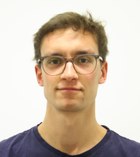Gust Nuytten
Laboratory of Pharmaceutical Process Analytical Technology
Ottergemsesteenweg 460
B-9000 Gent (Belgium)
Tel.: +32-9-264.8068
Fax: +32-9-222.82.36
E-mail: Gust.Nuytten@UGent.be
Education: Pharmacist (Master in Drug Development)
Continuous freeze-drying of live cells: maximizing post-process survival
In recent years there has been a rising trend in the development and production of biopharmaceutical drugs, many of which are administered parenterally as an aqueous formulation. However, they are often unstable in solution, which necessitates the removal of water for long-term storage. Dehydration of biopharmaceutical formulations is often accomplished by freeze-drying, which is a relatively slow and expensive technique.
Recently, the pharmaceutical industry has been moving away from batchwise processing and towards continuous manufacturing, stimulated by regulatory, quality-related and financial incentives. Transforming freeze-drying from the conventional batchwise process to a continuous process has been a major challenge. However, a concept and initial prototype have been developed and are currently being studied further by our group [1,2,3]. On the basic level, this concept involves rapidly rotating cilindrical unit doses filled with a liquid formulation and exposing them to a cold cooling gas. The contents are subsequently frozen, and ice is sublimed via energy provided by infrared radiation. This approach has a multitude of advantages over conventional freeze-drying, such as reduced vial-to-vial variability, reduced process time and the ability to choose cooling rates from a broad range (0.1 - 100°C/min).
Cell-based therapeutics are a class of biopharmaceutical drugs that is becoming increasingly interesting (e.g. immune therapy and stem cell transplants). The aim of this project is to assess the influence of a continuous freeze-drying process on the viability of cell-based therapeutics and cells in general. Hereto, factors like cooling rate and energy supply during secondary drying will be assessed, and the underlying biological and physical mechanisms will be investigated.
References
[1] Van Bockstal, PJ, Noncontact Infrared-Mediated Heat Transfer During Continuous Freeze-Drying of Unit Doses.
[2] Van Bockstal, PJ, Mechanistic modelling of infrared mediated energy transfer during the primary drying step of a continuous freeze-drying process
[3] De Meyer L, Evaluation of spin freezing versus conventional freezing as part of a continuous pharmaceutical freeze-drying concept for unit doses.